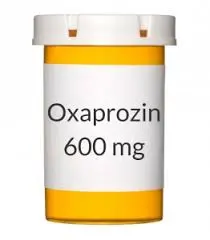Baclofen
Introduction
Baclofen is a medication commonly used to treat muscle spasms and spasticity. It belongs to a category of medications known as muscle relaxants. Baclofen primarily acts on the central nervous system, specifically targeting the spinal cord, where it inhibits the transmission of certain nerve signals, resulting in muscle relaxation. The drug was initially developed in the 1960s as an antiepileptic medication, but its effectiveness in reducing muscle spasms was soon discovered.
Baclofen is often prescribed for conditions such as multiple sclerosis, cerebral palsy, spinal cord injuries, and other neurological disorders that involve muscle spasticity. Baclofen is available in oral tablet and liquid forms. The dosage is typically started at a low level and gradually increased to achieve the desired effect. It is important to follow the prescribed dosage and not abruptly stop taking the medication, as sudden discontinuation can lead to withdrawal symptoms.
Common side effects of baclofen may include drowsiness, dizziness, weakness, fatigue, and nausea. Some individuals may also experience more serious side effects such as confusion, hallucinations, breathing difficulties, or allergic reactions. It is essential to consult a medical professional regarding any concerns or potential side effects. Baclofen may interact with other medications, so it is crucial to inform your healthcare provider about all the medications, supplements, or herbal products you are taking before starting baclofen. Overall, baclofen is a widely used medication for the treatment of muscle spasms and spasticity associated with various neurological conditions. It is important to use it as directed by a healthcare professional and to report any concerning side effects to ensure its safe and effective use.
- Chemical Formula – C10H12ClNO2
- Brand Names – Fleqsuvy, Gablofen, Kemstro, Lioresal, Lyvispah, and Ozobax
- Generic Name – Baclofen
- Type – Small Molecule
- Groups – Approved
Associated Conditions
- Alcohol Dependency
- Severe Spasticity
- Spasticity
- Flexor spasm
- Severe cerebral origin Spasticity
- Severe spinal cord origin Spasticity
Synonyms
- Baclofen
- Baclofène
- Baclofeno
- Baclofenum
- DL-Baclofen
What is a Baclofen drug?
Baclofen belongs to the class of drugs known as muscle relaxants. It is primarily used to alleviate muscle spasms and spasticity, particularly those associated with neurological conditions such as multiple sclerosis, cerebral palsy, and spinal cord injuries. In this detailed explanation, we will explore the mechanism of action, therapeutic uses, dosage, potential side effects, and precautions associated with baclofen. Baclofen acts on the central nervous system (CNS), specifically targeting the spinal cord, to reduce muscle spasticity. It functions as a GABA-B (gamma-aminobutyric acid) receptor agonist, which means it activates the GABA-B receptors in the CNS. GABA is an inhibitory neurotransmitter that assists to regulate the activity of nerve cells in the brain and spinal cord. By activating the GABA-B receptors, baclofen inhibits the release of certain neurotransmitters, such as glutamate, which are involved in the transmission of nerve signals that lead to muscle spasms. This inhibition ultimately results in muscle relaxation.
The primary therapeutic use of baclofen is the management of muscle spasms and spasticity. Spasticity is a condition characterized by the involuntary contraction of muscles, often causing stiffness and pain. Baclofen can help relieve these symptoms by reducing the hyperexcitability of nerve cells in the spinal cord, leading to a decrease in muscle tone and spasm frequency. It is especially effective in treating spasticity associated with conditions like multiple sclerosis, where the immune system mistakenly attacks the protective covering of nerve fibers, disrupting the normal functioning of the nervous system.
Baclofen is available in oral tablet and liquid forms. The dosage is usually individualized and adjusted according to the patient’s response and tolerance. Treatment typically starts with a low dose and is gradually increased over time until the desired effect is achieved. It is important to follow the prescribed dosage instructions carefully and not to abruptly stop taking the medication, as this can lead to withdrawal symptoms such as hallucinations, seizures, and increased spasticity. If discontinuing baclofen is necessary, a healthcare professional will provide recommendations on gradually tapering off the medication.
As with any medication, baclofen can have potential side effects. Common side effects include drowsiness, dizziness, weakness, fatigue, and nausea. These symptoms are usually mild and tend to diminish as the body adjusts to the medication. However, more serious side effects may occur, although they are relatively rare. These can include confusion, hallucinations, depression, breathing difficulties, allergic reactions, and changes in liver function. It is crucial to report any concerning or persistent side effects to a healthcare professional. Baclofen may interact with other medications, including certain antidepressants and antihypertensive drugs, so it is essential to inform your healthcare provider about all the medications, supplements, or herbal products you are taking before starting Baclofen. They can assess potential drug interactions and adjust dosages accordingly to ensure your safety and the effectiveness of the treatment.
Classification of Baclofen
- Baclofen is classified as a muscle relaxant and an antispasmodic medication. It specifically belongs to the class of drugs known as gamma-aminobutyric acid (GABA) agonists. Baclofen is a selective agonist for GABA-B receptors, which are present in the central nervous system.
- GABA is an inhibitory neurotransmitter that plays a crucial role in regulating neuronal activity. By activating GABA-B receptors, baclofen inhibits the release of certain neurotransmitters, such as glutamate, and reduces the excitability of nerve cells in the spinal cord. This ultimately leads to muscle relaxation and the alleviation of muscle spasms and spasticity.
- The classification of baclofen as a muscle relaxant reflects its primary mechanism of action in reducing muscle tone and spasms. Its antispasmodic properties are specifically useful in managing conditions characterized by increased muscle tone, such as multiple sclerosis, cerebral palsy, and spinal cord injuries.
- It is worth noting that although baclofen is primarily classified as a muscle relaxant and antispasmodic medication, it may have additional effects on the central nervous system. For example, baclofen has been studied for its potential in treating alcohol dependence and withdrawal symptoms, as it may modulate the release of other neurotransmitters involved in addiction pathways.
- As with any medication, it is important to consult with a healthcare professional for accurate information on the classification and specific use of baclofen, as well as potential side effects, interactions, and dosage guidelines tailored to your individual needs.
Who can take Baclofen?
Baclofen is a medication primarily used for the management of muscle spasms and spasticity. Let’s delve into the usage of baclofen in more detail, including the conditions it is prescribed for, dosages, treatment duration, and important considerations.
Muscle Spasms and Spasticity: Baclofen is commonly prescribed to reduce muscle spasms and spasticity. Spasms are involuntary muscle contractions that can be painful and disruptive, while spasticity refers to increased muscle tone and stiffness. Baclofen helps relax muscles and reduce these symptoms, improving mobility and relieving discomfort. It is frequently used in situations like:
- Multiple Sclerosis (MS): Baclofen is frequently prescribed for individuals with MS to manage spasticity caused by damage to the myelin sheath, which surrounds nerve fibers and helps transmit signals. MS can cause muscle spasms and spasticity, and baclofen can help alleviate these symptoms.
- Cerebral Palsy: Baclofen is used to alleviate muscle spasticity in individuals with cerebral palsy, a group of neurological disorders affecting movement and coordination. Spasticity is a common symptom of cerebral palsy, and baclofen can help reduce muscle stiffness and improve mobility.
- Spinal Cord Injuries: Baclofen is used to manage muscle spasticity resulting from spinal cord injuries. When communication between the brain and muscles is disrupted due to spinal cord damage, muscle spasms, and spasticity can occur. Baclofen can help relax the muscles and reduce these symptoms.
- Other Neurological Conditions: Baclofen may also be prescribed for individuals with other neurological conditions that involve muscle spasms and spasticity, such as stroke, traumatic brain injury, and certain movement disorders.
It is crucial to consult with a healthcare professional who can provide personalized advice and guidance on the appropriate usage of baclofen based on individual circumstances and medical history. It is important to note that the decision to prescribe baclofen is made by a healthcare professional based on the individual’s specific condition and medical history. Baclofen is typically prescribed when other treatments, such as physical therapy or other medications, have not provided sufficient relief from muscle spasms and spasticity.
Before starting baclofen, it is important to discuss any existing medical conditions, medications, and allergies with the healthcare professional. This information helps determine the appropriateness of baclofen and minimize the risk of any potential interactions or adverse effects. Overall, baclofen is prescribed to individuals who experience muscle spasms and spasticity related to specific neurological conditions, primarily multiple sclerosis, cerebral palsy, and spinal cord injuries. However, the decision to use baclofen should be made by a healthcare professional after a thorough evaluation of the individual’s medical history and condition.
How to use Baclofen?
The usage of baclofen should always be directed and supervised by a healthcare professional. They will provide specific instructions based on your condition and medical history. However, here are general guidelines on how to use baclofen:
Dosage and Timing:
- Follow the prescribed dosage provided by your healthcare professional. The dosage may vary depending on your condition and the severity of your symptoms.
- Baclofen is typically taken orally in the form of tablets or liquid.
- Take baclofen exactly as directed. Do not take more or less than the prescribed dose unless instructed by your healthcare provider.
Administration:
- Baclofen tablets: Swallow the tablet whole with a glass of water. You can take it with or without food, but consistency is important (either always with food or always without food).
- Baclofen liquid: Measure the prescribed amount using a calibrated measuring device. It can be taken directly or mixed with a beverage (water, juice, or soft drink) as instructed by your healthcare provider.
Gradual Dose Titration:
- When starting baclofen, your healthcare provider may initiate treatment at a lower dose and gradually increase it over time to find the optimal dosage that provides symptom relief while minimizing side effects.
- Follow your healthcare provider’s instructions for dose adjustments. Do not change the dosage on your own without consulting them.
Compliance and Regular Use:
- It is important to take baclofen consistently as prescribed. Skipping doses or discontinuing the medication abruptly can lead to a worsening of symptoms or withdrawal effects.
- If you miss a dose by accident, take it as soon as you remember to. Nonetheless, assuming it is near the ideal opportunity for your next planned portion, skirt the missed portion and go on with your standard dosing plan.
Duration of Treatment:
- The duration of baclofen treatment will depend on your specific condition and the recommendation of your healthcare provider.
- Baclofen is often used as a long-term treatment for managing chronic conditions such as multiple sclerosis, cerebral palsy, or spinal cord injuries. Regular follow-up with your healthcare provider is important to assess the treatment’s effectiveness and make any necessary adjustments.
Withdrawal:
- If baclofen needs to be discontinued, it should be done gradually under the guidance of your healthcare provider. Abruptly stopping baclofen can lead to withdrawal symptoms, including increased muscle spasticity, hallucinations, seizures, and potentially life-threatening conditions.
Always consult with your healthcare provider for specific instructions on how to use baclofen in your case. They will provide personalized guidance and consider your unique medical history, potential interactions with other medications, and any specific precautions or considerations.
Treatment Duration:
The duration of baclofen treatment varies depending on the underlying condition, its severity, and individual response. It can be used as a short-term or long-term treatment, often as part of a comprehensive management plan that may include physical therapy or other interventions. Regular follow-up with the healthcare provider is essential to monitor the treatment’s effectiveness and make any necessary adjustments.
Considerations and Precautions:
- Withdrawal: Baclofen should not be abruptly discontinued, as it can lead to withdrawal symptoms such as increased muscle spasticity, hallucinations, seizures, and even life-threatening conditions. If baclofen needs to be stopped, a healthcare professional will provide guidance on gradually tapering off the medication.
- Side Effects: Baclofen can cause side effects, which may include drowsiness, dizziness, weakness, fatigue, nausea, and constipation. Most side effects are generally mild and tend to diminish over time. However, it is crucial to inform the healthcare provider about any concerning or persistent side effects.
- Interactions: Baclofen may interact with other medications, including certain antidepressants, antihypertensive drugs, and drugs that affect the CNS. Inform your healthcare provider about all medications, supplements, or herbal products you are taking to ensure there are no potential interactions.
- Medical Conditions: Baclofen should be used with caution in individuals with certain medical conditions, such as kidney problems or a history of seizures. It is important to disclose your medical history to the healthcare provider before starting baclofen.
- Pregnancy and Breastfeeding: The use of baclofen during pregnancy or breastfeeding should be discussed with a healthcare professional, weighing the potential risks and benefits.
How does Baclofen work?
Baclofen works by acting as a selective agonist of gamma-aminobutyric acid B (GABA-B) receptors in the central nervous system. GABA is an inhibitory neurotransmitter that plays a crucial role in regulating neuronal activity by reducing the excitability of nerve cells. When baclofen is administered, it binds to and activates GABA-B receptors. This activation leads to a cascade of biochemical events that ultimately modulate neuronal activity and produce the desired therapeutic effects. The primary site of action for baclofen is the spinal cord, where it acts locally to target the specific nerve pathways involved in muscle spasticity. However, GABA-B receptors are distributed throughout the central nervous system, which suggests that baclofen may also have effects on other regions of the brain.
The mechanism of action of baclofen involves several key effects:
- Presynaptic Inhibition: Baclofen inhibits the release of certain neurotransmitters, such as glutamate, by reducing the influx of calcium ions into the presynaptic terminal. This inhibition occurs through the suppression of voltage-gated calcium channels. As a result, the release of excitatory neurotransmitters from presynaptic terminals is diminished.
- Postsynaptic Hyperpolarization: Baclofen also acts on postsynaptic neurons, leading to hyperpolarization. This hyperpolarization occurs through the opening of potassium channels, which increases the flow of potassium ions out of the cell. Hyperpolarization inhibits the generation and propagation of action potentials, reducing neuronal excitability.
- Modulation of Spinal Reflexes: Baclofen affects spinal reflexes by acting on interneurons within the spinal cord. It inhibits the transmission of signals from sensory neurons to motor neurons, resulting in a reduction in muscle spasticity.
By reducing the release of excitatory neurotransmitters and inhibiting neuronal excitability, baclofen helps to relax muscles, reduce muscle spasms, and alleviate spasticity. The precise mechanisms by which baclofen produces these effects are complex and not fully understood, as GABA-B receptors are involved in a variety of regulatory processes in the central nervous system.
It is important to note that the exact therapeutic effects and individual responses to baclofen can vary. The efficacy of baclofen in treating specific conditions, such as multiple sclerosis, cerebral palsy, or spinal cord injuries, will depend on various factors, including the underlying pathology and the patient’s unique physiology. As always, it is crucial to consult with a healthcare professional for a thorough understanding of how baclofen works in your specific case and to receive appropriate guidance on its usage and potential side effects.
Mechanism of Action of Baclofen drug
Baclofen’s mechanism of action involves its activity as a selective agonist of gamma-aminobutyric acid B (GABA-B) receptors in the central nervous system. GABA is an inhibitory neurotransmitter that plays a crucial role in regulating neuronal activity by binding to GABA receptors and reducing the excitability of nerve cells. When baclofen is administered, it acts as a GABA-B receptor agonist, meaning it binds to and activates the GABA-B receptors. This activation leads to a series of downstream effects, resulting in the inhibition of certain neurotransmitter release and subsequent modulation of neuronal activity. The activation of GABA-B receptors by baclofen primarily affects the presynaptic terminals of neurons. It causes the inhibition of voltage-gated calcium channels, which are responsible for calcium influx into the presynaptic terminal. This inhibition reduces the release of excitatory neurotransmitters, such as glutamate, into the synaptic cleft.
By decreasing the release of glutamate, baclofen indirectly decreases the excitatory input onto postsynaptic neurons. This reduction in excitatory neurotransmission helps to balance neuronal activity and reduces the overall excitability of the central nervous system. Furthermore, baclofen also hyperpolarizes postsynaptic neurons by opening potassium channels, which further dampens neuronal excitability. This hyperpolarization inhibits the generation and propagation of action potentials, contributing to the overall muscle relaxation effects of baclofen. The modulation of GABA-B receptors by baclofen occurs primarily in the spinal cord, where it acts locally to target the specific nerve pathways involved in muscle spasticity. However, it is important to note that baclofen’s effects are not limited to the spinal cord, as GABA-B receptors are distributed throughout the central nervous system. Thus, baclofen may also have effects on other regions of the brain, influencing various neurological functions. In summary, baclofen’s mechanism of action involves activating GABA-B receptors, leading to the inhibition of neurotransmitter release and subsequent modulation of neuronal activity. This activity primarily occurs in the spinal cord, resulting in muscle relaxation and the alleviation of muscle spasms and spasticity.
Baclofen undergoes extensive metabolism in the body, primarily in the liver. The metabolism of baclofen involves several enzymatic processes, including oxidation and conjugation reactions. Here is a detailed overview of the metabolism of baclofen:
Oxidative Metabolism:
- Cytochrome P450 enzymes: Baclofen undergoes oxidative metabolism primarily through the action of cytochrome P450 (CYP) enzymes, specifically CYP2C19 and CYP2C9. These enzymes catalyze the oxidation of baclofen to produce 3-hydroxy baclofen, which is the major active metabolite of baclofen.
- Genetic variations in CYP enzymes: It is important to note that genetic variations in these enzymes can result in individual differences in baclofen metabolism. Some individuals may be “poor metabolizers” and have slower metabolism of baclofen, while others may be “rapid metabolizers” and metabolize the drug more quickly.
Conjugation Reactions:
- Glucuronidation: The 3-hydroxy baclofen formed through oxidative metabolism can undergo glucuronidation, a process where it is conjugated with glucuronic acid. This conjugation reaction is catalyzed by glucuronosyltransferase enzymes, primarily UGT1A4. The resulting glucuronide conjugate, 3-hydroxy baclofen glucuronide, is an inactive metabolite.
Elimination:
- After metabolism, both the unchanged baclofen and its metabolites are primarily eliminated through the kidneys via urine. A small portion of baclofen and its metabolites may also be eliminated in feces.
Drug Interactions:
- Baclofen metabolism can be influenced by other medications. Some drugs that inhibit CYP enzymes, such as fluvoxamine and amitriptyline, can potentially increase the plasma concentration of baclofen by reducing its metabolism. Conversely, drugs that induce CYP enzymes, such as rifampin and phenytoin, may accelerate the metabolism of baclofen and reduce its plasma concentration.
It is important to note that individual variations in metabolism, drug interactions, and genetic factors can influence the rate and extent of baclofen metabolism. Therefore, it is advisable to consult with a healthcare professional or pharmacist regarding specific drug interactions and considerations based on individual factors. Additionally, it is worth mentioning that baclofen has a relatively short elimination half-life, which is the time it takes for the plasma concentration of the drug to decrease by half. The elimination half-life of baclofen is approximately 2 to 4 hours in healthy individuals.
The pharmacological effect of Baclofen
The pharmacological effects of baclofen are primarily mediated through its interaction with gamma-aminobutyric acid B (GABA-B) receptors in the central nervous system. Here are the key pharmacological effects of baclofen:
- Muscle Relaxation: Baclofen is primarily known for its muscle relaxant properties. By activating GABA-B receptors in the spinal cord, baclofen inhibits the release of excitatory neurotransmitters, such as glutamate. This leads to a reduction in the hyperexcitability of motor neurons, resulting in muscle relaxation. Baclofen is commonly used to manage muscle spasms and spasticity associated with conditions such as multiple sclerosis, cerebral palsy, and spinal cord injuries.
- Antispasmodic Effects: Baclofen’s ability to reduce muscle spasticity contributes to its antispasmodic effects. Spasms and involuntary muscle contractions can be dampened by the modulation of spinal reflexes and the inhibition of abnormal muscle activity. Baclofen helps restore normal muscle tone and control, allowing for improved movement and function.
- Analgesic Effects: Baclofen may have analgesic properties, although the exact mechanisms are not fully understood. It is believed that baclofen’s modulation of neuronal activity and inhibitory effects in the spinal cord can also affect pain perception. It may be used in certain cases to manage chronic pain conditions, such as neuropathic pain.
- Sedation and Sleep Regulation: Baclofen can induce sedation and promote sleep. GABA-B receptor activation in the brain can enhance the inhibitory actions of GABA, leading to a calming effect on the central nervous system. This sedative effect is utilized in some cases where sleep disturbances are associated with muscle spasticity or other conditions.
- Potential Effects on Alcohol Dependence: Baclofen has been studied for its potential in treating alcohol dependence. It is thought to modulate the release of other neurotransmitters involved in addiction pathways, such as dopamine and glutamate. However, further research is needed to fully understand the mechanisms and effectiveness of baclofen in this context.
It is important to note that the pharmacological effects of baclofen can vary between individuals and depend on factors such as dosage, individual response, and the specific condition being treated. The therapeutic benefits and potential side effects should be carefully evaluated by a healthcare professional when considering the use of baclofen.
The side effect of Baclofen
Baclofen, like any medication, can cause side effects in some individuals. While many people tolerate it well, it is important to be aware of the potential side effects that may occur. Here is a detailed overview of the possible side effects of baclofen:
Common Side Effects:
- Drowsiness and fatigue: Baclofen can cause drowsiness, sleepiness, or a feeling of general fatigue.
- Dizziness: Baclofen may cause dizziness or lightheadedness, particularly when changing positions (e.g., standing up quickly). It is recommended to rise slowly from a sitting or lying position to minimize this effect.
- Muscle weakness: Baclofen’s muscle relaxant properties can lead to a feeling of weakness or reduced muscle strength. It is important to be cautious when engaging in activities that require strength or balance.
- Nausea and gastrointestinal discomfort: Baclofen may cause nausea, stomach discomfort, or digestive issues such as constipation. Adequate hydration, dietary adjustments, and the use of fiber supplements can help manage these effects.
Less Common Side Effects:
- Confusion and cognitive changes: Some individuals may experience confusion, difficulty concentrating, or changes in cognitive function while taking baclofen. These effects are usually mild and resolve with time or adjustments to the medication dosage.
- Mood changes and depression: Baclofen can occasionally lead to mood swings, emotional changes, or depressive symptoms. It is important to promptly report any significant changes in mood or signs of depression to your healthcare provider.
- Headache: Headaches can occur as a side effect of baclofen. If persistent or severe, it is advisable to consult with your healthcare provider.
- Dry mouth: Baclofen can cause dryness in the mouth. Maintaining good oral hygiene and staying hydrated can help manage this side effect.
Rare but Serious Side Effects:
- Hallucinations and psychosis: In rare cases, baclofen may trigger hallucinations or psychosis-like symptoms. It is essential to report any hallucinations or significant changes in mental state to a healthcare professional immediately.
- Seizures: Baclofen withdrawal, especially if it occurs suddenly, can lead to seizures. Therefore, the medication should not be abruptly discontinued without medical supervision.
- Reactions to allergies: Baclofen can cause allergic reactions, though they are uncommon. Indications of a hypersensitive response might incorporate rash, tingling, expanding, serious discombobulation, or trouble relaxing. Seek immediate medical attention if an allergic reaction is suspected.
- Changes in liver function: Baclofen may rarely affect liver function, leading to abnormal liver enzyme levels. Regular monitoring of liver function may be recommended, especially in individuals with pre-existing liver conditions.
It is important to note that individual responses to medications can vary, and not all individuals will experience these side effects. If you have any concerns or experience troubling side effects while taking baclofen, it is crucial to consult with your healthcare provider. They can provide guidance, adjust the dosage if necessary, or explore alternative treatment options. Remember to always follow the prescribed dosage and inform your healthcare provider about any other medications, supplements, or health conditions you have, as they can influence the risk of side effects or interactions with baclofen.
How long does Baclofen take to work?
The onset of action of baclofen can vary among individuals. While some individuals may experience the effects of baclofen relatively quickly, for others, it may take longer to notice the full benefits. Here are some general considerations regarding the time it may take for baclofen to work:
Immediate Effects:
- Baclofen may start producing some immediate effects shortly after administration. These effects can include mild sedation or muscle relaxation.
- Some individuals may notice a reduction in muscle spasms or spasticity within a few hours of taking baclofen.
Gradual Improvement:
- In most cases, the full therapeutic effects of baclofen develop gradually over time.
- It may take several days to weeks of consistent use for the optimal benefits to be achieved.
- During this time, the dosage may be adjusted by the healthcare professional to find the most effective and tolerable dose for the individual.
Titration Period:
- Baclofen is often initiated at a lower dose and gradually titrated upward to minimize side effects and optimize the therapeutic response.
- The titration period can vary depending on the individual’s condition, starting dose, and the desired target dose.
- It is important to follow the healthcare professional’s instructions and not increase the dose without their guidance.
Individual Response:
- Individual responses to baclofen can vary significantly. Some individuals may experience a rapid and noticeable improvement in muscle spasticity or other symptoms, while others may require a longer time to observe significant benefits.
- The effectiveness of baclofen can also depend on factors such as the underlying condition being treated and the severity of symptoms.
It is essential to have regular follow-up appointments with your healthcare professional to evaluate the progress and make any necessary adjustments to the baclofen treatment. They can monitor your response, assess the need for dose adjustments, and provide additional recommendations or alternative therapies if needed. If you have concerns about the timeline of baclofen’s effects or the progression of your symptoms, it is best to consult with your healthcare professional for personalized guidance and advice based on your specific situation.
Who should not use Baclofen?
While baclofen is generally considered safe and effective for most individuals, there are certain situations in which it may not be recommended or should be used with caution. Here are some circumstances in which baclofen use may be contraindicated or require careful consideration:
- Allergic Reaction: Baclofen should not be used in individuals who have a known hypersensitivity or allergy to baclofen or any of its components. Signs of an allergic response may also possess rash, itching, swelling, severe dizziness, or difficulty breathing. Immediate medical attention should be sought if an allergic reaction is suspected.
- Severe Psychiatric Disorders: Baclofen may exacerbate symptoms of certain psychiatric disorders, including psychosis and severe depression. It should be used with caution in individuals with a history of these conditions or those currently experiencing severe psychiatric symptoms.
- Seizure Disorders: Baclofen can lower the seizure threshold, potentially increasing the risk of seizures. It should be used cautiously in individuals with a history of seizures or epilepsy. Close monitoring and appropriate dose adjustments may be necessary.
- Kidney Dysfunction: Baclofen is primarily excreted through the kidneys. Individuals with severe kidney impairment may require dose adjustments or careful monitoring to avoid excessive drug accumulation. In some cases, baclofen may be contraindicated in individuals with end-stage renal disease.
- Hepatic Dysfunction: Baclofen is primarily metabolized in the liver. Individuals with severe liver impairment may require dose adjustments or close monitoring to ensure the drug is adequately metabolized and to prevent potential adverse effects.
- Pregnancy and Breastfeeding: The safety of baclofen use during pregnancy and breastfeeding has not been well established. It should be used only if the potential benefits outweigh the potential risks and under the supervision of a healthcare professional. The use of baclofen during pregnancy or while breastfeeding should be carefully evaluated and discussed with a healthcare provider.
- Elderly Individuals: Elderly individuals may be more susceptible to the sedative effects of baclofen. Lower initial doses and careful titration may be necessary to minimize the risk of excessive sedation and related adverse effects.
It is important to note that this is not an exhaustive list, and individual circumstances may vary. Before using baclofen, it is crucial to consult with a healthcare professional who can evaluate your medical history, assess potential risks and benefits, and provide personalized recommendations based on your specific situation.
Is Baclofen addictive?
- Baclofen has the potential for dependence and withdrawal symptoms if it is abruptly discontinued after prolonged use. However, when used as prescribed and under the supervision of a healthcare professional, the risk of addiction to baclofen is generally low.
- Baclofen is not considered a controlled substance, unlike certain other medications used to manage spasticity and muscle relaxants. It does not typically produce the same euphoric or pleasurable effects that are associated with addictive substances.
- That being said, it’s important to follow the prescribed dosage and instructions for baclofen use. Abruptly stopping baclofen after long-term use can lead to withdrawal symptoms such as confusion, hallucinations, seizures, and increased spasticity. Therefore, it is recommended to gradually taper off the medication under the guidance of a healthcare professional to minimize the risk of withdrawal effects.
- Individuals with a history of substance abuse or addiction should disclose this information to their healthcare provider before starting baclofen therapy. Close monitoring and cautious use may be warranted in such cases.
- If you have concerns about the addictive potential of baclofen or if you are experiencing difficulties in managing your medication, it is important to discuss these concerns with your healthcare professional. They can provide guidance, support, and appropriate strategies to ensure the safe and effective use of baclofen.
Toxicity of Baclofen
Baclofen toxicity refers to the harmful effects that can occur when an individual takes an excessive amount of baclofen, resulting in an overdose. Baclofen overdose can lead to serious medical complications and requires immediate medical attention. Here are some key points regarding the toxicity of baclofen:
Symptoms of Baclofen Toxicity:
- Central Nervous System Depression: Baclofen is a central nervous system depressant, and an overdose can lead to profound sedation, drowsiness, lethargy, and confusion.
- Respiratory Depression: High doses of baclofen can suppress the respiratory system, resulting in slow and shallow breathing.
- Hypotension: Baclofen overdose can cause a drop in blood pressure, leading to lightheadedness, dizziness, and potentially fainting.
- Hypothermia: Baclofen toxicity may lower body temperature, causing hypothermia.
- Seizures: In some cases, an overdose of baclofen can trigger seizures.
- Bradycardia: Baclofen overdose may cause a slow heart rate.
Risk Factors:
- High Doses: Taking significantly higher doses of baclofen than prescribed or recommended can increase the risk of toxicity.
- Individual Sensitivity: Some individuals may be more sensitive to the effects of baclofen, making them more susceptible to toxicity even at normal doses.
- Co-occurring Conditions: Individuals with impaired liver or kidney function may be at a higher risk of baclofen toxicity due to reduced drug clearance.
Management of Baclofen Overdose:
- Reaching emergency assistance or a poison control center should be made immediately if an overdose is imagined.
- In a healthcare setting, treatment may involve supportive measures such as airway management, ensuring adequate ventilation, maintaining blood pressure, and providing symptomatic care.
- Activated charcoal or gastric lavage may be considered to reduce absorption if the overdose occurred recently.
- In severe cases, antidotes such as flumazenil (for respiratory depression) or naloxone (for opioid-induced effects) may be used, although their efficacy for baclofen toxicity is not well-established.
It is crucial to emphasize that baclofen should be used only as prescribed by a healthcare professional. Any concerns about the risk of toxicity, potential overdose, or side effects should be discussed with a healthcare provider. They can provide guidance, monitor your treatment, and make any necessary adjustments to ensure your safety.
Precautions of Baclofen
When using baclofen, it is important to take certain precautions to ensure safe and effective use of the medication. Here are a few key precautions to regard:
- Medical History: Inform your healthcare provider about your complete medical history, including any allergies, kidney or liver problems, history of seizures, psychiatric disorders, or substance abuse. These factors may influence the dosage and monitoring requirements for baclofen.
- Pregnancy and Breastfeeding: If you are pregnant, planning to become pregnant, or breastfeeding, discuss the potential risks and benefits of using baclofen with your healthcare provider. The safety of baclofen in these situations has not been fully established.
- Drug Interactions: Inform your healthcare provider about all the medications you are taking, including prescription drugs, over-the-counter medications, and herbal supplements. Certain medications can interact with baclofen and affect its effectiveness or increase the risk of side effects. These may include sedatives, antidepressants, antihypertensive drugs, and certain medications that affect liver enzymes (such as cimetidine).
- Drowsiness and Impaired Abilities: Baclofen can cause drowsiness, dizziness, and impaired coordination. Avoid activities that require mental alertness and physical coordination, such as driving or operating machinery, until you know how baclofen affects you.
- Alcohol and CNS Depressants: Combining baclofen with alcohol or another central nervous system (CNS) depressants, such as sedatives or tranquilizers, can enhance the sedative effects and increase the risk of respiratory depression and impaired functioning. Avoid or limit alcohol consumption while taking baclofen.
- Dose Adjustments: Follow your healthcare provider’s instructions regarding the dosage and schedule of baclofen. Do not adjust the dose without consulting your healthcare provider. They may need to titrate the dose gradually to find the most effective and tolerable dose for you.
- Withdrawal and Discontinuation: Baclofen should not be abruptly stopped after prolonged use, as it can lead to withdrawal symptoms such as confusion, hallucinations, seizures, and increased spasticity. If discontinuing baclofen, it should be done under the guidance of a healthcare professional who will gradually taper the dose.
- Storage and Handling: Keep baclofen in its original container and store it at room temperature, away from moisture and heat. Maintain it out of the spread of children and pets.
It is essential to communicate openly with your healthcare provider, follow their instructions, and report any concerning symptoms or side effects while using baclofen. They can give customized counsel and direction because of your particular circumstance.
Enhancing Healthcare Team Outcomes
Medical services laborers, including MDs, DOs, PAs, and NPs who endorse baclofen, ought to teach the patient about the protected utilization of this medication. It functions admirably as a muscle relaxant, however, its utilization to oversee low back torment is restricted. Sedatives, hypnotics, and other narcotics should not be taken with the medication. Additionally, baclofen should not be prescribed for an extended period.
In demand to use baclofen, the healthcare group needs to work together and communicate openly. The prescriber will pursue the clinical choice to utilize baclofen, however, the drug specialist ought to check the fittingness of the portion, and method of organization and perform prescription compromise to preclude drug collaborations. Nurses will frequently administer the medication, particularly intrathecally, and they should be aware of any signs of side effects or overdosing. The pharmacist or nurse must have the authority to immediately notify the treating clinicians of any cause for concern. Using an interprofessional team approach, baclofen therapy will be made more effective, and side effects will be minimized.
Conclusion
In conclusion, baclofen is a medication widely used to alleviate muscle spasms and spasticity associated with various neurological conditions. Its mechanism of action involves activating GABA-B receptors in the CNS, leading to the inhibition of certain nerve signals and muscle relaxation. Baclofen is available in oral tablet and liquid forms, and its dosage is typically adjusted individually. While generally well-tolerated, baclofen can cause side effects, ranging from mild to severe, and may interact with other medications. It is important to use baclofen as directed by a healthcare professional, report any concerning side effects, and discuss potential interactions to ensure its safe and effective use.
FAQ
What is the other name for baclofen?
Tablets of baclofen, a muscle relaxant, are used to treat muscle spasms. It loosens up your muscles, which lessens muscle firmness. This medication is sold under the names ED Baclofen® and Lioresal®.
Is baclofen good as a muscle relaxer?
Baclofen is used to help relax specific body muscles. It alleviates muscle spasms, cramps, and tightness brought on by medical conditions like multiple sclerosis or certain spine injuries.
Is baclofen similar to gabapentin?
Gabapentin, like baclofen, mostly causes problems with the central nervous system. 12 to 18% of patients taking gabapentin therapy may experience confusion, dizziness, and fatigue. The patient’s tolerance to gabapentin is enhanced through progressive titration or temporary dose reduction.
Is baclofen a diazepam?
Valium and baclofen are two different drugs in different classes. Valium is a benzodiazepine, and baclofen is an antispasmodic and muscle relaxant. Drowsiness, weakness, dizziness, tiredness, nausea, and constipation are among the similar side effects of baclofen and Valium.
Is baclofen a safe drug?
Baclofen can make mental health issues, hypertension (autonomic dysreflexia), and seizures worse.
Is baclofen good for sciatica?
Muscle relaxants: Drugs, for example, Baclofen might be useful for certain individuals. Opioid painkillers: Opioids like morphine, Percocet, and Oxycodone may be beneficial for short-term treatment of severe pain.
What is baclofen is it a narcotic?
A narcotic is not baclofen. It doesn’t follow up on the narcotic receptors in the cerebrum. However, it can be used to treat severe pain, just like opioids. There is no controlled significance in it.
Is baclofen used for sleep?
Is baclofen a sedative? Baclofen is not a sleeping pill but rather a muscle relaxant. Notwithstanding, it follows up on the CNS and has discouraging properties that can cause gentle sedation and languor.








3 Comments